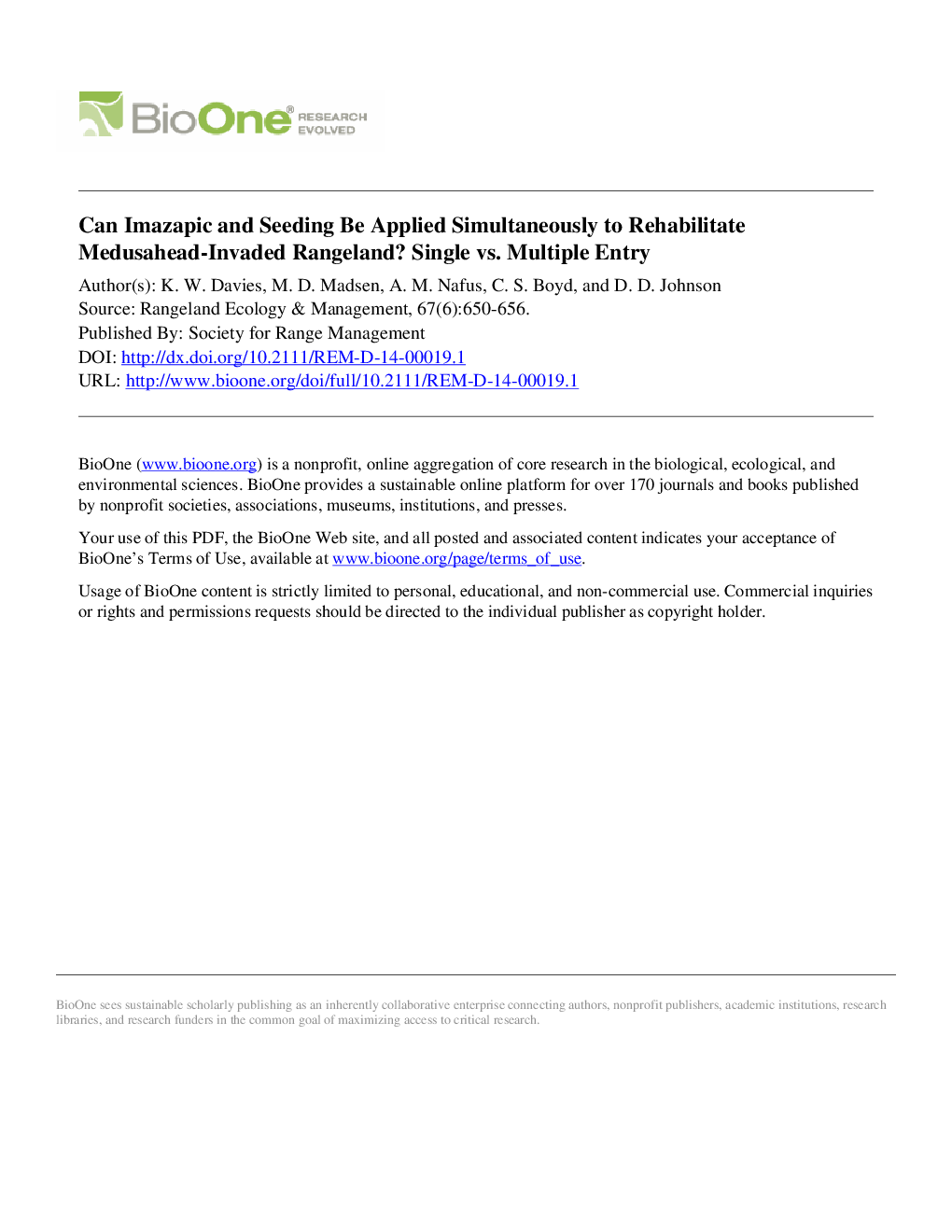| Article ID | Journal | Published Year | Pages | File Type |
|---|---|---|---|---|
| 4404371 | Rangeland Ecology & Management | 2014 | 8 Pages |
Abstract
It has recently been proposed that the cost of rehabilitating medusahead (Taeniatherum caput-medusae [L.] Nevski)-invaded rangelands may be reduced by concurrently seeding desired vegetation and applying the preemergent herbicide imazapic. However, the efficacy of this “single-entry” approach has been inconsistent, and it has not been compared to the multiple-entry approach where seeding is delayed 1 yr to decrease herbicide damage to nontarget seeded species. We evaluated single- and multiple-entry approaches in medusahead-invaded rangelands in southeastern Oregon with seeding for both approaches occurring in October 2011. Before seeding and applying herbicide, all plots were burned to improve medusahead control with imazapic and prepare the seedbed for drill seeding-introduced perennial bunchgrasses. Both approaches effectively controlled medusahead during the 2 yr postseeding. However, almost no seeded bunchgrasses established with the single-entry treatment (<â0.5 individalsâ·âm-2), probably as a result of nontarget herbicide mortality. Perennial grass cover and density in the single-entry treatment did not differ from the untreated control. In contrast, the multiple-entry treatment had on average 6.5 seeded bunchgrassesâ·âm-2 in the second year postseeding. Perennial grass (seeded and nonseed species) cover was eight times greater in the multiple-entry compared to the single-entry treatment by the second year postseeding. These results suggest that the multiple-entry approach has altered the community from annual-dominated to perennial grass-dominated, but the single-entry approach will likely be reinvaded and dominated medusahead without additional treatments because of a lack of perennial vegetation.
Related Topics
Life Sciences
Agricultural and Biological Sciences
Agricultural and Biological Sciences (General)
Authors
K.W. Davies, M.D. Madsen, A.M. Nafus, C.S. Boyd, D.D. Johnson,
